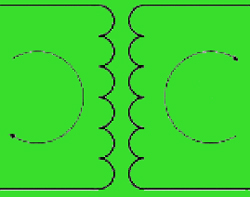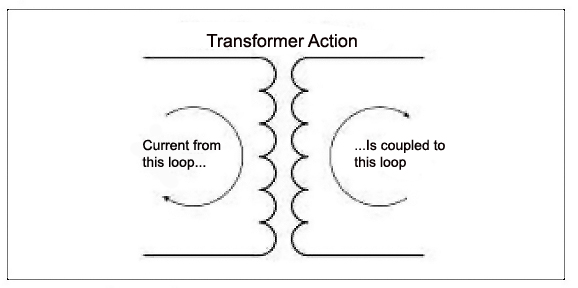
Noise currents will circulate through these “ground loops” (Mother Nature does this without our permission) and possibly infect the audio signal if this parasitic ground current finds its way onto a circuit board.
Isolation devices can allow the audio signal to be coupled from an output to an input with no physical wire joining the two circuits, eliminating at least one of the ground loops.
Transformer isolation allows the signal to be coupled via induction (Figure 4).
Optical isolation uses pulsed light to couple the signal, but usually requires that the signal be converted to a digital format.
The transformer has an advantage in that the signal can remain in analog form.

The irony is that the same mechanism that allows a signal to be coupled between two circuits inductively also allows power supply fields to be coupled into ground loops (Figure 5).
We’re faced with the common engineering task of maximizing the effect when it helps us and minimizing it when it is working against us.
Putting all of these mechanisms to work, an active distribution amplifier with transformer balanced inputs and outputs may be the optimum way of distributing an audio signal to multiple components.

The active stages buffer the inputs from short circuits, and the transformers allow ground loops to be interrupted while allowing the signal to pass, while at the same time providing excellent common-mode rejection.
Many DAs also include level controls for each output, allowing the signal level to be optimized for mic or line level devices.
When distributing an audio signal to multiple inputs, don’t overlook the simplicity of simply using a properly wired Y-cable to accomplish the task. If the signal needs to extend beyond the rack, a good DA will easily justify the investment.
